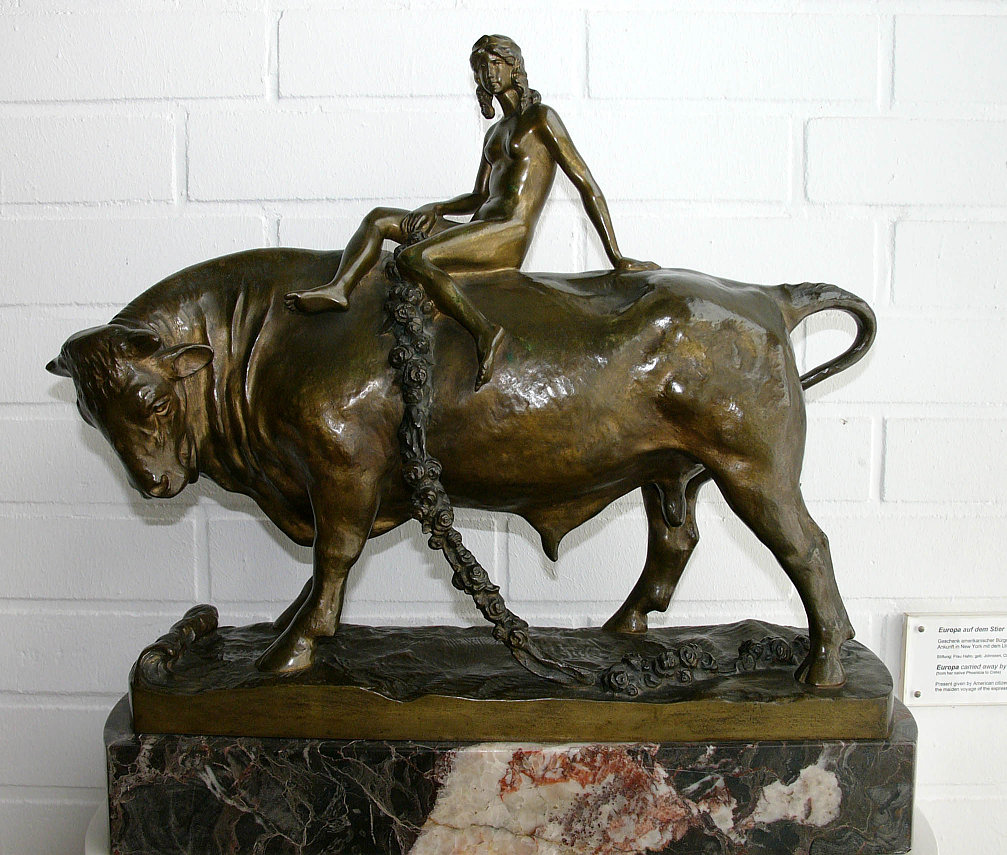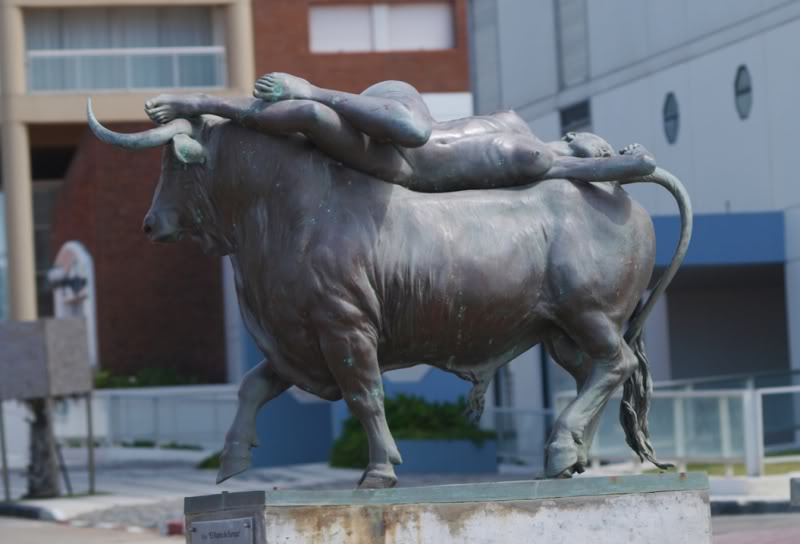Europe
Europe: The beautiful Phoenician princess who captivated Zeus and gave birth to King Minos of Crete.
Europe was the daughter of Agenor, the king of Phoenicia, and Telephassa. Her brothers were Cadmus, Phoenix, and Cilix.

According to the myth, one day Zeus saw Europa gathering flowers in a meadow by the seashore and fell in love with her. He transformed into a majestic bull that plunged into the meadow. The girl was captivated by the bull’s beauty, which was as white as snow and whose horns sparkled in the sunlight. The bull was so gentle that Europa stroked and fed him by hand. Feeling such trust in the magnificent creature, she dared to climb onto his back. Suddenly, the bull began to run, and as he moved away, Europa, unable to react, was carried into the sea and swam to Crete.
In Crete, they climbed Mount Dicte, where Zeus revealed his true identity to the girl. From their union, three sons were born, who ruled over different regions of Crete.

The first and strongest of them was Minos, who gave his name to the civilization flourishing on the island, known as the Minoan civilization. His brothers were Rhadamanthus and Sarpedon. Minos ruled over Knossos, which was the most impressive Minoan palace. Rhadamanthus governed Phaistos, near the southern coast of Crete. Sarpedon became the lord of Malia, which was located east of Knossos.
Europe is often depicted in ancient Greek art. In the 16th and 17th centuries, the story of Europa was very popular among prominent painters. The most famous depictions of her story were created by the Italian painter Titian (1489-1576), the Flemish artist Peter Paul Rubens (1577-1640), and the Dutch artist Rembrandt (1606-1669).

Europe names herself the continent to which Greece belongs.